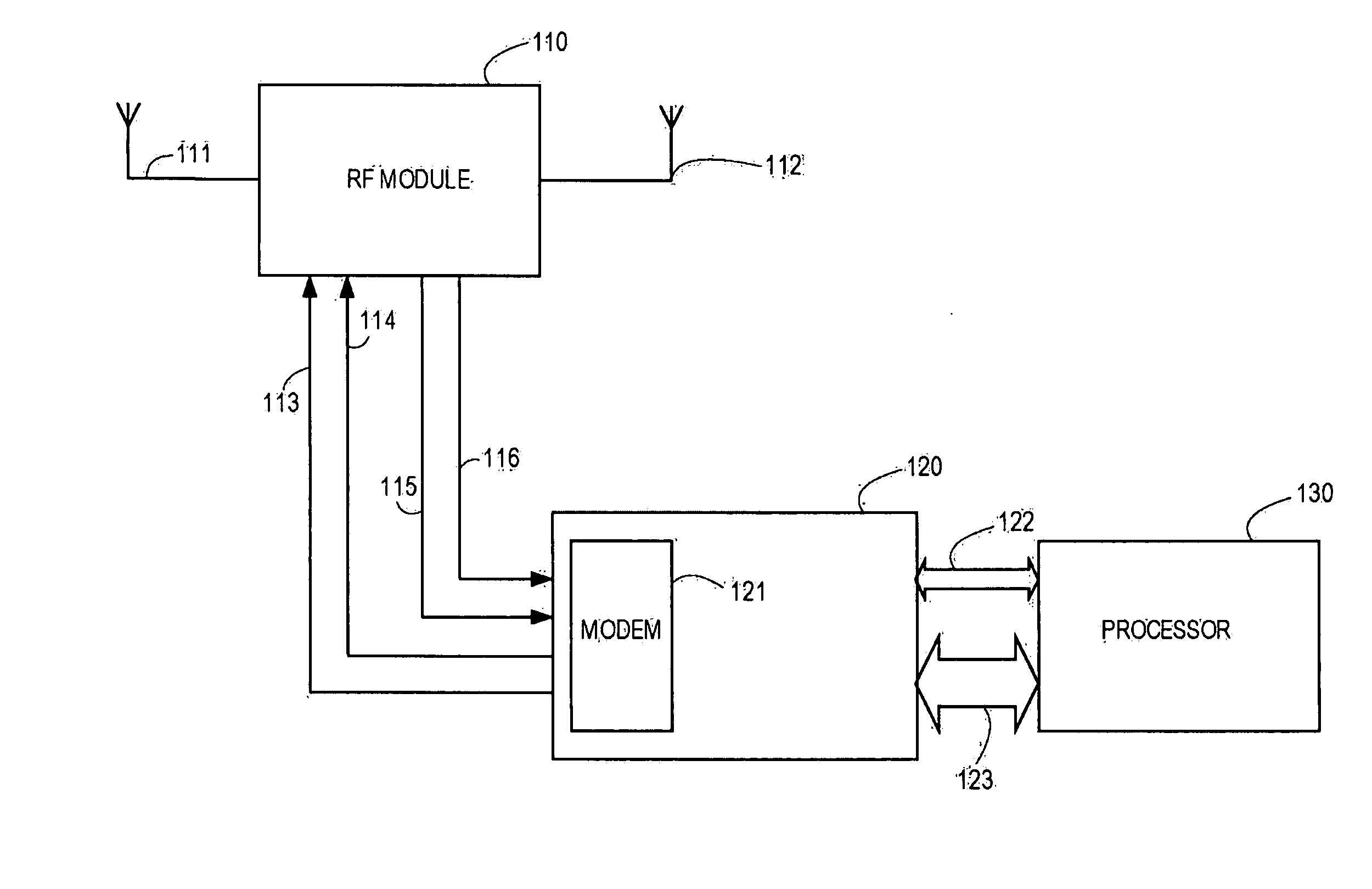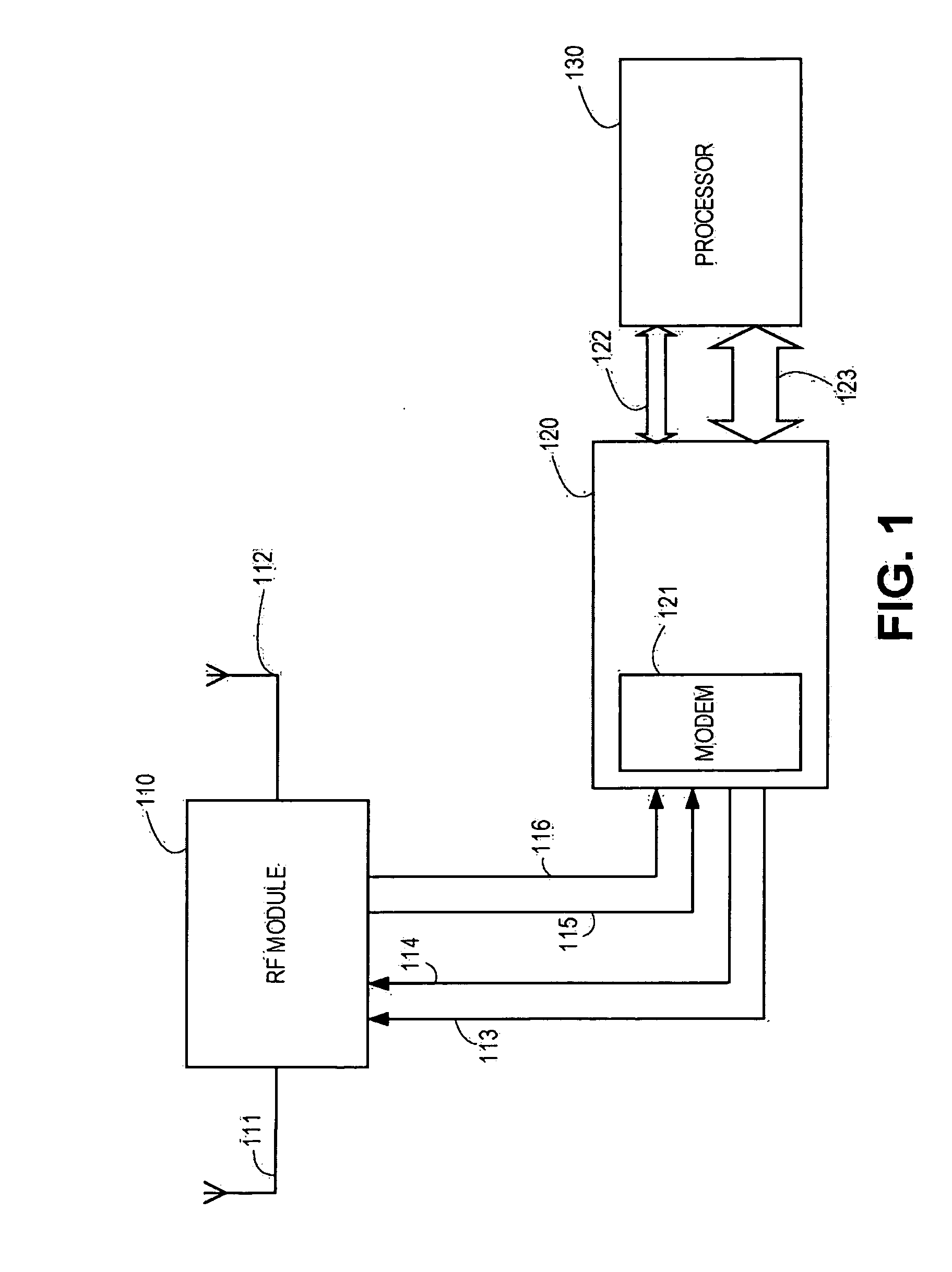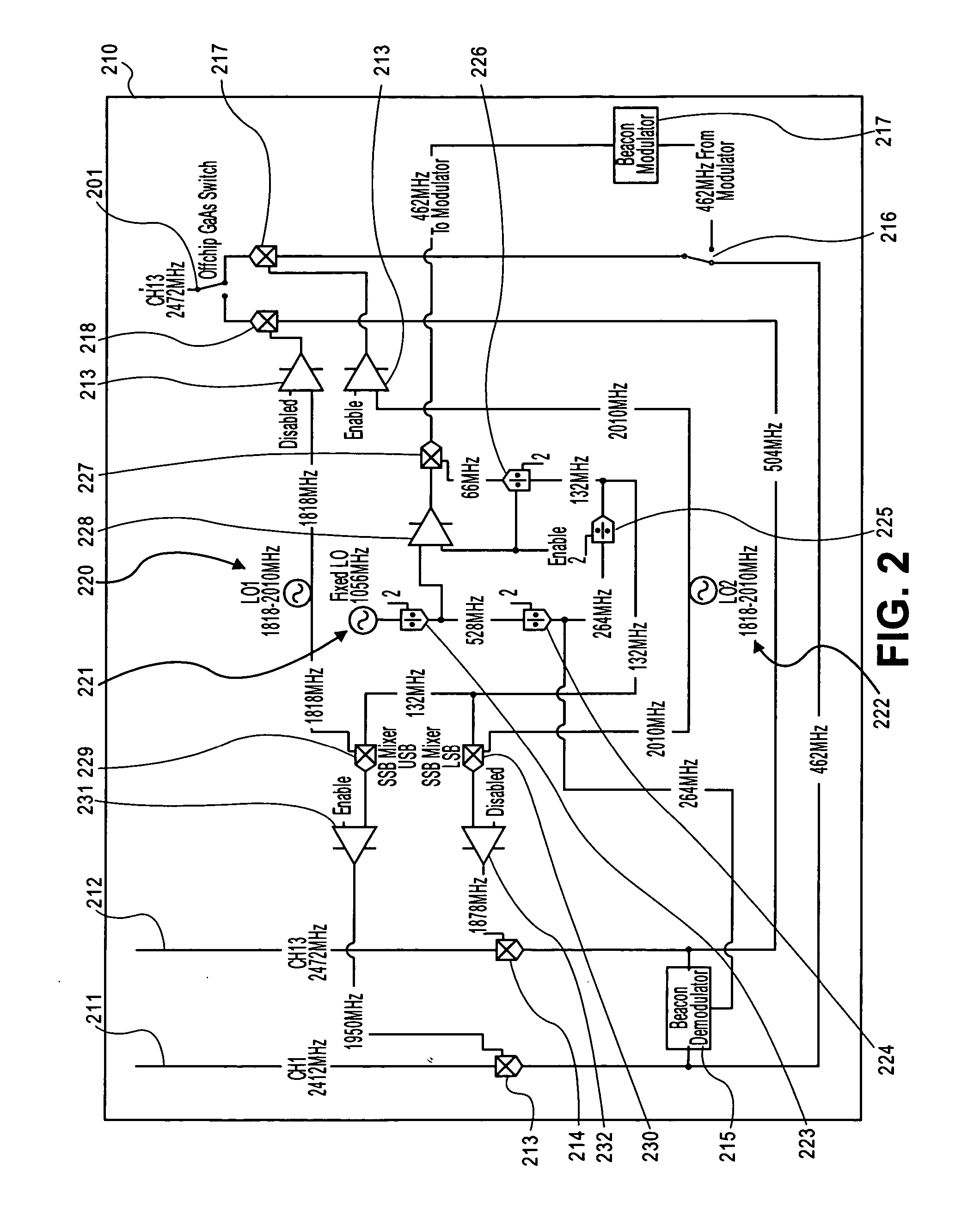Frequency translating repeater with low cost high performance local oscillator architecture
a local oscillator and frequency translation technology, applied in the field of wireless networks, can solve the problems of signal anomalies, transmission signal down-conversion into the receive band, jamming effect, etc., and achieve 80 db of isolation between two different lo circuits on the same substra
- Summary
- Abstract
- Description
- Claims
- Application Information
AI Technical Summary
Benefits of technology
Problems solved by technology
Method used
Image
Examples
Embodiment Construction
[0014] To better appreciate the basic components of an exemplary repeater, reference is made to FIG. 1. A simplified diagram of the major components of an exemplary frequency translating repeater are shown and include an RF module 110 having a first antennal 111 and a second antenna 112. The RF module 110 is bi-directionally coupled through lines 113, 114, 115, and 116 to a baseband module 120 having a modem 121. It will be appreciated that the modem 121, which can be a beacon modem, or the like, for beacon recovery and processing, requires a sampling clock for demodulation and a frequency carrier for modulation. It should be noted that in accordance with various exemplary embodiments, simultaneous demodulation of both frequency channels is desirable. Accordingly, the number of allowable IF frequencies and the required clock and LO frequencies is limited. Table 1 lists a set of allowable frequencies for an IF and sampling clock in accordance with various embodiments. It will be appr...
PUM
 Login to View More
Login to View More Abstract
Description
Claims
Application Information
 Login to View More
Login to View More - R&D
- Intellectual Property
- Life Sciences
- Materials
- Tech Scout
- Unparalleled Data Quality
- Higher Quality Content
- 60% Fewer Hallucinations
Browse by: Latest US Patents, China's latest patents, Technical Efficacy Thesaurus, Application Domain, Technology Topic, Popular Technical Reports.
© 2025 PatSnap. All rights reserved.Legal|Privacy policy|Modern Slavery Act Transparency Statement|Sitemap|About US| Contact US: help@patsnap.com



